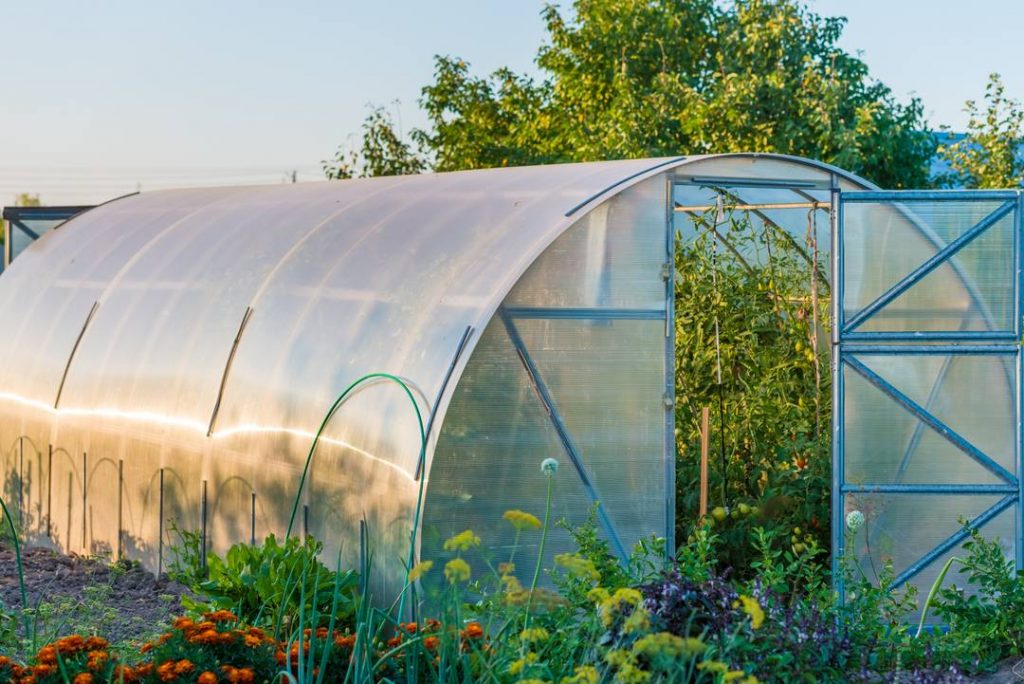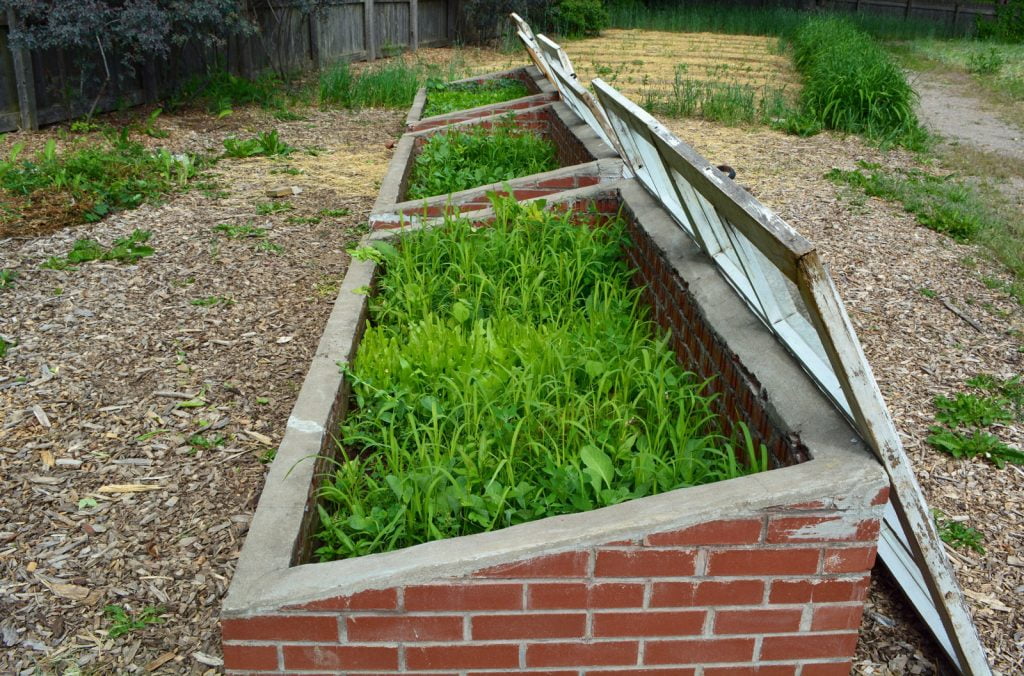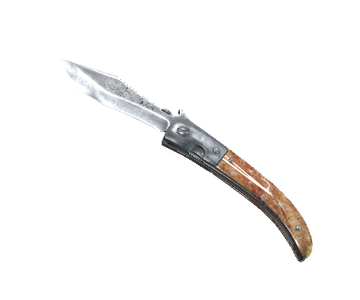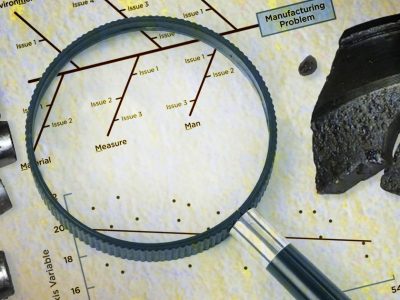Gardening is an elite hobby that requires quite some time and effort—watering life into little seeds to help them grow out as beautiful plants can be extremely therapeutic. It is no wonder that this calls for a respectable amount of economic and mental investment, primarily if you reside in an unfavorable climate, say, for instance, the extremes – too hot or too cold.
The right temperatures are essential to a plant’s growth, and those passionate about it go to lengths to ensure it so. Greenhouses are a great help in such conditions, providing just the right environment for the plants and shrubs’ flourishing.
Cold frames are a simpler alternative to full-fledged greenhouses that come in numerous shapes and sizes and no not require. This inevitably leads to a rather anticipated question among the consumer groups, cold frame vs. greenhouse.
Cold frames are a pocket-friendly and space-friendly way to help the little shrubs and herbs grow during the harsh winters or hot summers. Greenhouses have been in use for many decades now and work miraculously well in promoting plant growth under severe conditions if maintained well.
Here, we discuss the significant differences and salient features of both the ways for the enthusiastic green thumbs to decide according to their convenience on which method serves them better, cold frame vs. greenhouses.
Greenhouses

Greenhouses are artificial environments set up by man to encourage their greens’ growth in adverse weather conditions. They work on the greenhouse effect principle, trapping solar radiation, and absorbing it to a maximum, raising the temperature in the greenhouse’s interiors.
They can either be a cool house or a hothouse based on the climatic zone of the place. The temperature inside the greenhouse is higher in both cases as compared to the outer environment.
They also act as a protective shelter against winds and rain. A greenhouse is generally an enclosed arrangement containing mostly four glass walls, an entrance, a tapered or vaulted roof, a proper ventilation system, and a heat source depending on the amount of heat required per space’s climate and specific plant requirements.
The glass walls have wooden frames or bracing for support. Industrial plastic can also be used instead of glass, depending on the requirement and budget. The scale of greenhouses is rather big, resembling a small house.
It is vast enough to house an adult with hassle-free circulation. This is a rather important point when distinguishing cold frames vs. greenhouses as it is a common assumption that cold frames are more compact and small, which is not entirely accurate as cold frames come in various sizes and shapes.
Greenhouses enable the user to completely control the enclosed space’s temperature and environment to suit the growing plants. The humidity, ventilation, watering, and lighting are all inclusively taken care of to create the best possible backdrop for healthy plant growth.
A hot greenhouse maintains about 55 degrees or more of nighttime temperature while a cool greenhouse upholds a minimum of 45 degrees nighttime temperature. Greenhouses can be set up in backyards or attached to existing built structures like homes or garages.
Readymade greenhouses are available in the market to be bought and installed for an extensive price range of over 200$ to 2000$, depending on the size and materials. Building a greenhouse on your own is a useful option and can be quite pocket-friendly, too, with the right skills and knowledge.
Proper ventilation and humidity are essential to plant growth and need to be checked upon intensively. A heat source becomes necessary to check on the right temperatures in the closure. The right lighting, advisably one that mimics the natural sunlight during the dawn and dusk timings throughout the night (around 12 hours), also becomes significant in serious gardening ventures.
Many advanced systems have built-in or computerized monitoring systems to set and maintain the correct environment throughout the plants’ life span. With the expansion and embracive growth of technology, smart lawn monitors with pointers on the right soil moisture content and nutrients check are also available in the market. This helps the user know when the lawn goes dry to water the lawn accordingly and not wastewater or other resources and time.
According to the specific requirements, the best kinds of greenhouses allow the users to monitor both the daytime and nighttime temperatures. The amount of solar radiation trapped throughout the day is quintessential for the species’ proper growth and life span harbored. Humidity ranges are also significant contributors depending upon the plant species, as some require a specific range of humidity to flourish.
Storage and space management are also important features to maximize space usability. Adding racks for containing tools, equipment and layering smaller plants helps maximize the greenhouse.
Hanging smaller herbs in cute little planters over the wooden frame using nails and threads adds a real aesthetic value to the greenhouse apart from the organization factor. It is essential to ensure that all the plants get enough sun exposure when layering them, as it may act as a hindrance in the later growth stages.
Maintenance and Costing
Maintaining a greenhouse is quite a task as it requires a lot of effort. Regular cleaning, shoveling, leaks, and cracks must be checked regularly. Termites and bacterial protection are all regularly required to maintain proper functioning. Timely watering of plants, trimming, and so are required to ensure plants’ healthy growth just like regular plants outside greenhouses.
The costing varies as per the size, shape, material, and whether or not you’re buying a premade set from the market or building one on your own. The former price ranges vary according to many pointers and lie within the range of 200$ – 2000 $. In contrast, the latter may fit into a maximum of 500$ depending on the tools, equipment, and materials used for construction.
Cold Frames

To put it simply, cold frames are an uncomplicated version of greenhouses. Their primary function is to protect herbs, shrubs, and seedlings from the harsh winters, frost, and winds. It is a similar enclosed structure with a wooden frame and glass top. The top or cover may be removed depending on use and requirement.
The size varies from box-like to acre long containers with human holding capacity depending on user requirement. Cold frames are often attributed to help with the specific function of seed germination and preliminary growth. The significant difference in comparing cold frame vs. greenhouse is that artificial heating treatments are not applied in a cold frame.
Most people requiring a heating provision opt for greenhouses. Cold frames have opted for the plant species that require protection from the harsh climate, especially the cold. They are generally built against an existing built structure, like garages or homes, to provide better shelter to the plants during the extreme winter months.
They provide quite similar warming effects to a greenhouse but with much more specific and minimum provisions. The maximum usage of the cold frames is to extend the growing period of some plants. Heat can be provided in many simple forms like warm water bottles over technical installations like heaters. It is observed that plants grow swifter when placed in a cold frame and it evens helps increase their life span by considerable amounts.
Cold frames are often limited to smaller and relatively compact boxes, eliminating the stipulation of leveling in racks or stories. Thus, space division and organization are essential. Larger cold frames could indeed incorporate layering and racks. Cold frames are very species-specific.
Tropical plants would not survive in a cold frame during the winter months as the cold frames are not designed to raise the temperature. Cold frames are frequently compared to greenhouses as being an inferior adaption of the same. But they are quite a great addition to a small yard or garden as they are very efficient and useful.
These are cheaper and tinier alternatives to all-purpose greenhouses. The temperature cannot be user-controlled in a cold frame, and it exclusively depends on the solar rays for heat gain. External heat provisions are not incorporated. Most cold frames have a single wall glazing. With extreme winters, these may not be as efficient as no heat is radiated.
They are the most competent to use when spring is about to commence, and soil begins to warm after the last frost. They are also proficient before and after the last frost. They are excessively resourceful in increasing the growing season by a few weeks to help the seeds grow and nourish.
Maintenance and Cost
Maintaining a cold frame is much easier as compared to greenhouses. Watering and checking on the plants regularly are a must in any gardening activity and is no different while using cold frames.
Cleaning and ensuring there are no leaks and cracks are again essential for the proper functioning of the cold frame. The gardener also needs to keep checking there is no bacterial growth or debris, or build up inside the closure.
Costing of a cold frame is conflictingly low from that of greenhouses. Both premade models and hand-built structures cost around the same range. The expense varies with the size, shape, and materials employed in constructing the cold frame. The range lies within 30$ to 15-$ on an average.










[…] lighting in the kitchen, install bedroom chandeliers, more lighting in the family room, or in the greenhouse, etc.? Then, you need to make a list of all the rooms in your home, including the number of doors […]
[…] tall structure and is therefore an easy solution for cute little gardens or backyards. The primary purpose of cold frame greenhouse is to protect your plantation or vegetation. Most of the cold frames are made of four glass or wood […]
[…] During the nights of December and January, your plants may need extra heat as the temperature fall to a large extent. For this, you can use electric bulbs with bright yellow light to keep the cold frame greenhouse warm. […]
[…] can adjust this greenhouse with the height of your raised beds, which is why this is a perfect adjustable cold frame greenhouse. It is made of PVC, plastic sheeting, plywood, screws, studs, and other […]
[…] space is the issue, you can always opt for a cold frame or greenhouse. However, it is important to note that, just like caravans, a garden office is a depreciating asset […]